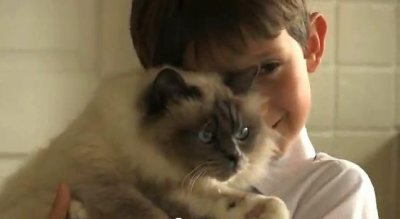A recent article on Medical News Today highlights a study in which researchers find that a Father's interactions and positive time spent with infants at age 3 months result in less behavioral issues for tots aged 12 months and beyond. The study projects that fathers who spend quality time with their infants and toddlers have children who grow up with fewer behavioural issues and overall do better in many social aspects of life.
Although this seems to be common sense to most of us, especially to those of us who work with kids who have Not had positive male or female influences in their early lives, its interesting reading, and is meant to support education for new parents of the future.
Even though you may be working with older kids who have suffered because of lack of good parental influences in their early lives, its not too late to effect a change in their behavior. Remember, RAD or trust disorder kids must be taken back to an infancy-stage of nurturing when you are working with them to begin to build that trust (see the blog post titled: RAD Kids: Working with Your Support System, Finding the Weak Link and Breaking the Manipulation Cycle) so this is a good time for the Father (foster or adopted) to spend some quality time as well as the primary care giver (usually the mother in most cases) to influence the child as he might have had, he had the child at 3 months of age.
Here is the report:
Children whose fathers are more positively engaged with them at age three months have fewer behavioural problems at age twelve months, according to new research funded by the Welcome Trust. The study suggests that interventions aimed at improving parent-child interaction in the early post-natal period may be beneficial to the child's behaviour later on in life.
Behavioural disorders are the commonest psychological problem affecting children. They are associated with a wide range of problems in adolescence and adult life, including academic failure, delinquency, peer rejection and poor psychiatric and physical health. Research suggests that the roots of enduring behavioural problems often extend back into the preschool years.
Epidemiological studies have identified a number of risk factors for the onset and continuity of behavioural problems. Amongst these, parenting characteristics and patterns of parent-child interaction appear to be particularly important. However, studies of parental factors usually focus on the role of the mother.
In a study published in the Journal of Child Psychology and Psychiatry, researchers at the University of Oxford studied 192 families recruited from two maternity units in the UK to see whether there was a link between father-child interactions in the early postnatal period and the child's behaviour.
Read more here
image: Flickr
Although this seems to be common sense to most of us, especially to those of us who work with kids who have Not had positive male or female influences in their early lives, its interesting reading, and is meant to support education for new parents of the future.
Even though you may be working with older kids who have suffered because of lack of good parental influences in their early lives, its not too late to effect a change in their behavior. Remember, RAD or trust disorder kids must be taken back to an infancy-stage of nurturing when you are working with them to begin to build that trust (see the blog post titled: RAD Kids: Working with Your Support System, Finding the Weak Link and Breaking the Manipulation Cycle) so this is a good time for the Father (foster or adopted) to spend some quality time as well as the primary care giver (usually the mother in most cases) to influence the child as he might have had, he had the child at 3 months of age.
Here is the report:
Father-Infant Interactions Linked To Child's Behavior
Article Date: 20 Jul 2012 - 0:00 PDTChildren whose fathers are more positively engaged with them at age three months have fewer behavioural problems at age twelve months, according to new research funded by the Welcome Trust. The study suggests that interventions aimed at improving parent-child interaction in the early post-natal period may be beneficial to the child's behaviour later on in life.
Behavioural disorders are the commonest psychological problem affecting children. They are associated with a wide range of problems in adolescence and adult life, including academic failure, delinquency, peer rejection and poor psychiatric and physical health. Research suggests that the roots of enduring behavioural problems often extend back into the preschool years.
Epidemiological studies have identified a number of risk factors for the onset and continuity of behavioural problems. Amongst these, parenting characteristics and patterns of parent-child interaction appear to be particularly important. However, studies of parental factors usually focus on the role of the mother.
In a study published in the Journal of Child Psychology and Psychiatry, researchers at the University of Oxford studied 192 families recruited from two maternity units in the UK to see whether there was a link between father-child interactions in the early postnatal period and the child's behaviour.
Read more here
image: Flickr
- License

 Some rights reserved by Bryan Gosline
Some rights reserved by Bryan Gosline










